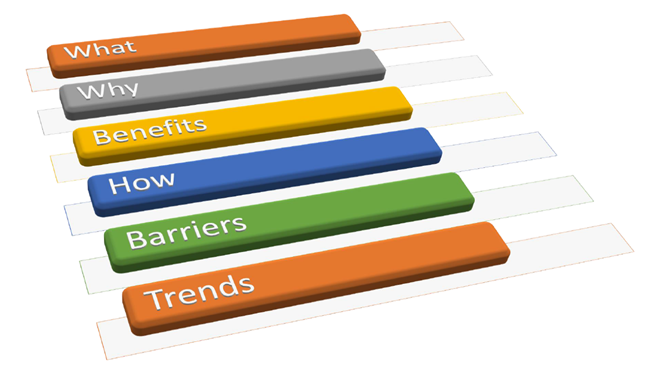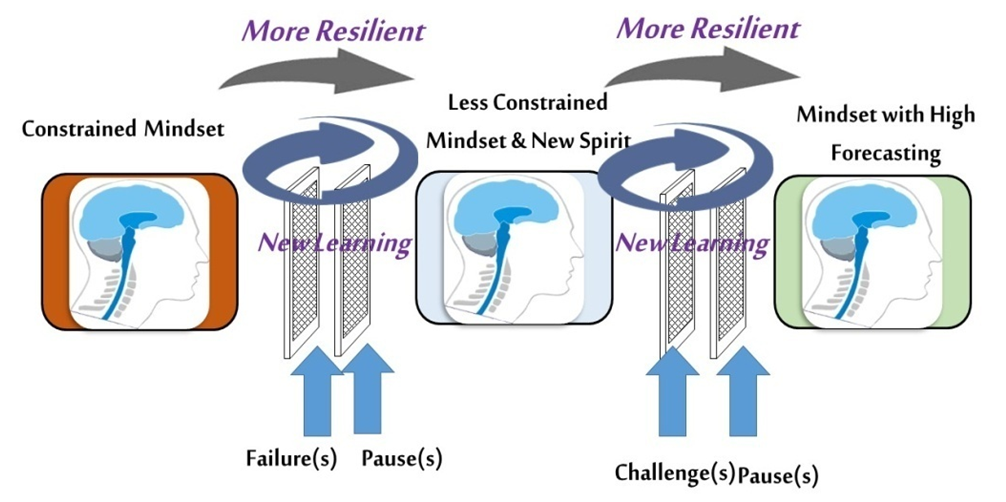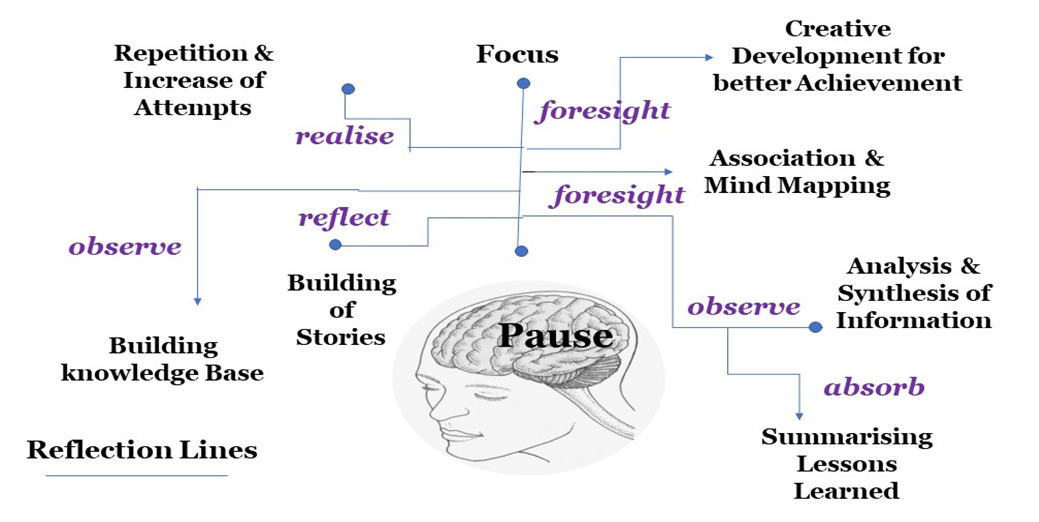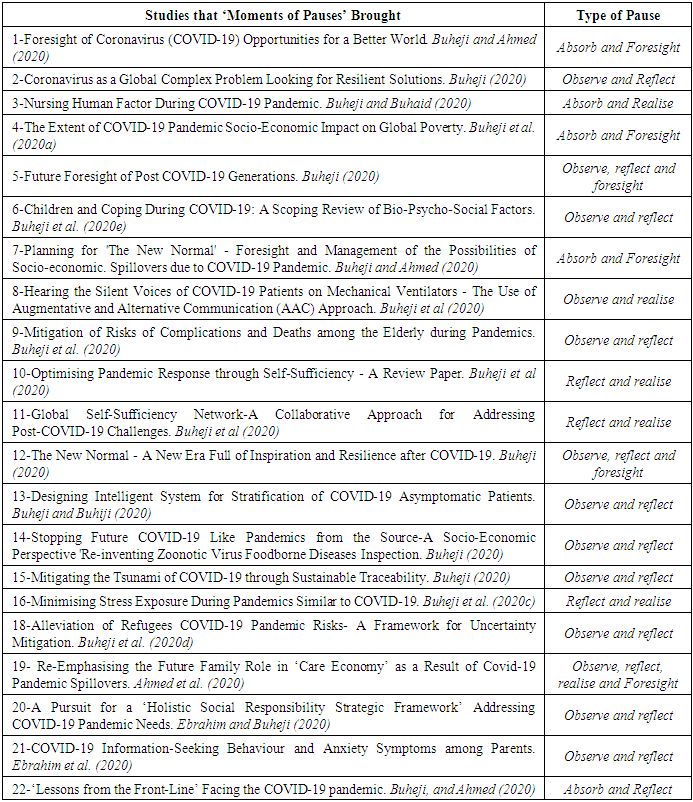-
Paper Information
- Paper Submission
-
Journal Information
- About This Journal
- Editorial Board
- Current Issue
- Archive
- Author Guidelines
- Contact Us
International Journal of Psychology and Behavioral Sciences
p-ISSN: 2163-1948 e-ISSN: 2163-1956
2020; 10(4): 85-92
doi:10.5923/j.ijpbs.20201004.01
Received: August 1, 2020; Accepted: August 27, 2020; Published: August 29, 2020

Optimising ‘Moments of Pauses’ – A Reflections from COVID-19 Pandemic
Mohamed Buheji
International Inspiration Economy Project, Bahrain
Correspondence to: Mohamed Buheji, International Inspiration Economy Project, Bahrain.
| Email: |  |
Copyright © 2020 The Author(s). Published by Scientific & Academic Publishing.
This work is licensed under the Creative Commons Attribution International License (CC BY).
http://creativecommons.org/licenses/by/4.0/

COVID-19 brought our life to a total halt at different times and in all the continents of the world. The total halt brought with it the opportunity to experience the ‘moments of pause’ which is missed in a busy life. This paper investigates the importance of this moment, and its role in improving our contribution and potential differentiate performance outcome. The case study presents the outcome of ‘moment of pauses’ utilised by the Inspiration Economy researchers to solve problems or exploit opportunities. The context of the case study presents how the utilisation of pauses helped to address some of the main challenges and issues of COVID-19 pandemic and its spillovers earlier than many other researchers. This study implies that it shows the necessity of taking ‘moments of pauses’ in the new normal where challenges of life would extraordinary and where we need to reflect then realise or foresight. The researcher confirms that once this research is applied in different contexts, it could be generalised with minimal limitations to be a strong tool for communities development and flourishment.
Keywords: Pause, Moments of Pauses, COVID-19 Pandemic, New Normal, Habit of Pausing, Exploring Opportunities
Cite this paper: Mohamed Buheji, Optimising ‘Moments of Pauses’ – A Reflections from COVID-19 Pandemic, International Journal of Psychology and Behavioral Sciences, Vol. 10 No. 4, 2020, pp. 85-92. doi: 10.5923/j.ijpbs.20201004.01.
Article Outline
1. Introduction
- It is amazing how many people go about their lives constantly giving, helping, contributing and yet they never take pause to recharge. It is no wonder why a number of individuals report feeling overly stressed and over-worked in their lives. It has gotten to the point where it is almost an epidemic. In this literature review, we explore the importance of keeping pace with our current focus and the pauses created by COVID-19 pandemic. The author presents how taking the right pauses are essential for managing the challenges of the new normal. The paper also exploits the role of live labs in enhancing its return to pauses.The review shows the importance of taking the right pauses during an unprecedented international emergency, that does not show a clear end, is very important. The pauses play an important role in our future life and livelihood since it eliminates the negative side-effects of uncertainty. Buheji et al. (2020a).The author presents to the body of knowledge the importance of designing consistent moments of pauses through the technique of ‘habit stacking’ that help us retain the wisdom and exploit the opportunities, Buheji and Ahmed (2020c). The paper shows that as we go through forced pausing status due to the pandemic, we could optimise the inspiration flow and improve our visualisation. Taking a pause in life found to lead more to sharp and resilient mindset. As an example, for the importance of ‘gap years’ for the post-COVID-19 generation is further reviewed with some importance for taking pauses in business.
2. Literature Review
2.1. Keeping Pace with Our Current Focus
- Taking a pause helps to retrieve the images of our current focus. This enhances our capacity to continue with life challenges and overcome the repercussions of any type of crisis. Ganly (2018) emphasised the importance of cultivating a reflective practice that enhances the learning landscapes using PARA model (pausing, attending, revising, adopting, adapting). Pausing leads to existing reflective practice which establishes more focus as transformational potential. The act of pausing gives a good kick-start.
2.2. ‘Moments of Pauses’ Created by COVID-19 Pandemic
- The message of the COVID-19 pandemic is that it brought to us unavoidable severe slowdown of our life and livelihood due to the pandemic. This should make us take a pause about many things that became routines of our life. This incidence helps us to see many hidden opportunities that were unexplored in our life journey. Buheji and Ahmed (2020c).The pandemic crisis has propelled many tools and new technological gadgets that started to fill what has been paused since the start of the lockdowns in many countries. As if the world was waiting for this pause to happen to start changing many old aspects of life, or how we deal with life.
2.3. ‘Moments of Pauses’ Essential for Managing the Challenges of the New Normal
- As we enter the official biggest recession in recent human history and a total unprecedented phase of modern humanity, called the new normal, or post-COVID-19 era; we would need to reallocate lots of resources and take lots of pauses to ensure that we are in the right direction. The new normal is expected to come with lots of shack-ups, or spillovers that might shift from one industry to another. Thus, we should consider that we would be in a dynamic environment like ‘work-in-progress’ for a few years, before we settle for the final shape of our business-models. Taking more attempted pauses won’t be a choice but an essential tactic and even strategic decision that would define our capacity to manage the challenges of this new normal.The pauses need to take care of the alternation of statuses that would be the norm of that shape the new normal and the decades that follow. In this era, our capacity to make us a focus on ‘what we need’ and not ‘what we want’.
2.4. Role of Live Labs in Enhancing the Return to Pauses
- Live Labs are meant to create an environment that promotes taking proper pauses at the right time. In inspiration labs, part of the international inspiration economy projects, taking the pauses lead to both more effective projects and publications that enhance the concerned community learning and engagement. Buheji (2018) mentioned that by asking ‘what’ and ‘why’, and then taking a pause to capitalise on the benefits, we could create the necessary learning community. Once theses labs are open to a complicated multidisciplinary problem, the pause would help to develop the proper exploration and focus on overcoming challenges, on starting the 'how' questioning. Through focused Inspiration Lab initiatives, we can overcome barriers and create a transformation in our communities. This environment, once created, helps us to carry out more experiments that help to support the currencies of inspiration. The labs actually help to create a new type of design in thinking, together with tools for the targeted sector. These labs pause help to build capacity for effective change with minimal resources. Such a change helps improve service delivery while enhancing autonomy.
 | Figure (1). Sequence of Questions in Inspiration Labs |
2.5. Eliminating the Negative Effect of Uncertainty through Right Pauses
- Taking a pause would help us to take quality time to reflect and then learn from the tests and trails, or increase our focused ‘experiential learning’ attempts. The pause helps us to establish sustained inspiration through looking back continuously over what has been observed, or carried out. This deep looking back helps us to extract the net meanings of what we achieved and we fail to achieve, or what we are striving to achieve. These alternations help us to formulate a currency that eliminates the negative sides of any uncertainty we go through. Thus, moments or even phases of uncertainty become moments of reflection that helps us to reconstruct and association the different observations and experiences which can lead to organising our ideas for future moves. Buheji et al. (2020a).As we sail towards an unknown field in the new normal, fuzziness will become and go at different frequencies and at different times of our life. Fuzziness represents an auto soul and/or self-search exercise that influences us to pause and reflect, which enhances our ability to contribute to life and to our socio-economy.
2.6. Designing Consistent ‘Moments of Pauses’ through ‘Habit Stacking’
- Taking moments of pauses consistently give us chances to develop a physical phenomenon in the brain called ‘synaptic pruning’. These synapses are a series of connections between the different neurons in your brain. The action of a pause prunes our brain neurons connections that are often not fully utilised and build up association paths and new connections that get used more frequently. The more we take moments of pauses and reflect, the stronger the brain connections become. Not only that, but the brain connections also become faster, and more efficient after each pause. This biological change in the brain leads to new attitudes or ‘habits stacking’. Jack and Roepstorff (2002).Synaptic pruning plays an important role in building new habits as synaptic pruning occurs with every habit we build. The more the pauses are taken at the right time, the stronger and more efficient the connection becomes. When we link a current habit we already do and then stack it with another behaviour, we establish ‘habit stacking’. This establishes a clear intention for implementation where the pairing of taking moments of pauses would replace our striving for achievement without doing enough reflections and pauses.
2.7. Building Wisdoms of Life through the Habit of Pausing
- Wisdom comes when we start realising the connectedness of specific behaviour which make us appreciate specific meanings of life. This happens due to reflections that come as a result of pauses. Utilising the patterns and the behaviours that have been strengthened in the brain connected neuron over the years build for potential for wisdom if we stop to think and reflect. The pauses give us the chance to revisit the routes that are already built into our brain. Jack and Roepstorff (2002).Designing such journey means we would have more focused exploration about our life-purposefulness while taking many pauses in life to explore the ‘what’ and the ‘why’ of the things around us, and in our way.The waves of lifelong learning that create the collective wisdom make us more capable of linking stories of life through taking pauses in life. It is actually full of excitements, challenges, attempts, besides pauses for reflections and learnings. Living a life that is full of insights and ideas to be tested or investigated, or problem to be explored, or visualising hidden possibilities that could be discovered can be rarely achieved without taking effective pauses.
2.8. The Opportunities of Forced Pauses during the Pandemic
- Buheji and Ahmed (2020) mentioned about the variety of opportunities that devastating pandemic as COVID-19 could bring along. One of these opportunities is that the pandemic enhances the individual and the community capacity for being more creative towards challenging and complex problem, Buheji and Ahmed (2020c). Taking a pause after visualising the problem outcome helps to optimise the decision-making process, thus building the innovation elements needed. Buheji (2020d).
2.9. Flow of Inspiration after Taking Moments of Pause
- Effective and inspiring moments of pauses come only when we go through the status of humbleness, determination and focus. The more we make special focused efforts we live humbleness, while the more we make achievements, we could extract hardiness that leads to determination. Both focused efforts and realisation of achievements help us to build new objectives based on scientific decisions. Such a cycle which occur based on taking selective pauses triggers the flow of inspiration, as shown in Figure (2).
 | Figure (2). Flow of Inspiration after Taking a Pause |
2.10. How Taking a Moment of Pause to Improve Our Visualisation?
- Taking a pause happens after visualisation helps to optimise our thoughtful action. We can see that visualisation after a pause, enhance our capacity to have critical reflection and ‘stand back’ from the emotions and better judgments. Every challenge or problem needs a ‘visualisation representation’ framework that brings a proposed solution. By taking the right moment of pause, we can visualise not only the data observed and collected, but also our relation to the problem. Using visualised framework helps us to highlight the key relationships between the problem that needs to be solving and its stakeholders. If we study all those that have a powerful visualised aim that influenced their own lives and their community, we would see that they have managed to do this by taking effective moments of pausing.Thus, to retain an effective visualisation pause, we need to get involved in community issues and set a link of how these issues are related to us. This involvement would help us to start gradually pause and visualise, with less fuzziness, the life we want and collect the hardiness to work for it.Visualisation is considered one of the most important techniques that gurus, leaders and sports legends use to excel in the achievement of their goals. However, we must manifest realised observations, which does not come easily without moments of effective pausing and reflecting.
2.11. Emphasising Gap-Years for the Post-COVID-19 Generation
- ‘Gap years’ used to be an optional choice amongst some of the youth pre- or post-graduation, especially in highly developed countries. However, as we are entering a new normal that requires new employability competency that depends on attitudes more than skills, ‘gap years’ are becoming more of a must for the post-COVID-19 generation. Buheji and Buheji (2020c).Taking a complete pause that makes youth reflect on the essence of life helps to really explore their type of life progression needed. Gap years pause help to avoid fatal mistake and when to press the button. With gap-year, we have more opportunity to have natural moments of pauses which might increase our visualisation, and thus can synthesise any learning outcomes that would be reflected in our lives and our communities condition. The gap-year helps us to map our life and to see how different opportunities around us could set up our most entire life flow.
2.12. Taking Pauses and Resilient Mindset
- When we take a pause and think about it, we start to shape a resilient mindset. The main differentiation for any resilient mindset is its capacity to create failures and challenges after any pause. The learnings created due to the different pauses make any constrained mindset to be less constrained, as it is injected with a new spirit. Such a spirit would lead to high forecasting capability, as illustrated in Figure (3). Buheji (2020b); Clark (2020).
 | Figure (3). Illustration of the role of Natural and Artificial Pauses that build a resilient mindset |
2.13. Importance of Taking ‘Moments of Pauses’ in Business
- COVID-19 crisis has demonstrated many challenges facing businesses models and their capacity for operational efficiency. Taking pauses can help bring many startups in this unstable competitive environment since the entrepreneurs would understand the type of flexibility they need to interact with or adapt to the changes introduced due to the new normal caused by the pandemic. The uncertainty that dominates the market has prompted emerging companies and markets that require reduced costs and high cash liquidity. Buheji et al. (2020a).After evaluating the new market demands, almost all the entrepreneurs are likely to reconsider their long-term business models, and thus shift their focus towards urgent consumer needs. Pauses enhance the capacity of investing in important demanded solutions such as information and telecommunication system (ICT). The pause enforced by the lockdown created by the pandemic introduced many programs and initiatives dedicated to supporting startups. The business partnerships would also be reviewed as part of the requirements of the new normal and its required creative solutions.
3. Methodology
- Since the outbreak of the COVID-19 pandemic, the International Inspiration Economy Project (IIEP) taken different pauses to observe, absorb, reflect, realise and foresight the ‘untapped potential solutions’ that this international emergency crisis brought, Buheji and Ahmed (2020b). These pauses generated a variety of multidisciplinary research that tackled different issues. The paper put a ‘case study’ on the type of research opportunity that the different type of pauses brought. This methodology could create a transformation towards how the publications, for the example, could be extracted when we are faced with coming new challenges, as in the case of the new normal.
4. Case Study
- This case study presents the outcome of applying ‘moments of pauses’ by the researchers of the International Inspiration Economy Project (IIEP) on the main challenges and issues of COVID-19 pandemic and its spillovers. Table (1) shows a sample of 22 studies our 32 published peer-reviewed paper since February 2020. The list of papers in the table shows how the ‘moments of pauses’ were utilised to realise and/or visualise the benefits from developing a new approach to the world, or our lives and our societies during this unprecedented world pandemic. Studies due to moments of pauses also could come from taking advantages in developing new solutions for what opportunities for risks that could be hidden or coming, and not only what challenges are existing.
|
5. Proposed Framework
- Based on the literature review and the case study, a framework is proposed to optimize the effect of the ‘moments of pause’ through exploiting the ‘reflection lines’ that help to take the pause and improve the capacity to be more focused. In order to encourage and then optimize the outcome of taking the ‘moments of pause’ our knowledge-base needs to be optimized so that more stories are built, Buheji and Buheji (2020b). Thus, the observation and the absorption pauses help to bring more possibilities for effective analysis and synthesis of information that create the ‘lessons learned’. These inputs in the proposed framework lead for better attempts and repetitions that establish a ‘realisation pause’ that establish part of our early focus capacity.The framework in Figure (4) shows that by taking a ‘foresight pause’ we experience creative development for better achievement that are supported by mind mapping those associate things together, Buheji and Ahmed (2020b). The ‘association-lines’ develop a mind mapping that helps in analysing and synthesizing the information or the observations accumulated in the brain. Last but not least, the proposed framework would help to latent focus that enhance the contribution of the ‘moments of pause’ and would lead to the capacity to the foresight and visualise.
 | Figure (4). Proposed Framework for Taking the ‘Moments of Pause’ |
6. Discussion
- The literature review and the case study show that whether the ‘moments pauses’ are taken due to natural, unplanned conditions or due to planned artificial conditions as labs, similar to inspiration labs, they are all found to contribute to building and to shape a ‘resilient mindset’. Such resilience driven mindset is highly needed in the new normal, i.e. post-the COVID-19 pandemic where challenges need to be met with a better mental and physical capacity that maintain and improve life and livelihood. The variety of multidisciplinary papers listed in Table (1) of the case study show that there is‘ flipping point’ for any effective ‘moments of paise’ where we can extract solutions and outcomes from negative events or challenging moments. The case study also shows that we have a variety of pauses that could be used to bring the best outcome. In this case study, we could see that global problems as: diseases, mental health, poverty, refugees, family stability problems, children psychology, socio-economic spillovers, social responsibility, traceability, uncertainty and more can come from different types of pauses. These pauses that are presented in the scope of this research are: observation pauses, reflection pauses, realisation pauses and foresight pauses; they all could help to develop better visualisation to explore the ‘untapped potentials’ or the ‘hidden opportunities’.
7. Conclusions and Recommendations
7.1. The Call for More ‘Moments of Pauses’ Research
- Literature has rarely linked the importance of ‘moments of pause scientifically’ with the capacity to observe, or absorb, or reflect, or realise, or foresight. This paper put through its ‘case study’ the type of opportunities that the different type of could pauses bring to the world and the type of ‘untapped solution’ that could be exploited, taking the academic research in relevance to the COVID-19 pandemic as a context. The simplicity of the methodology is meant to help generalise, qualitatively, the use of ‘moments of pause’ to develop our life contribution and our capacity for bringing effective solutions in different fields.
7.2. Main Implication and Limitation of This Study
- The implication of this paper is that there is a great relation between the following variables: capacity to observe, or absorb, or reflect, or realise, or foresight, in one side, and two other main variables: ‘moments of pauses’ plus ‘effective focus’. The main limitation of this study is that its framework needs to be further tested in different contexts and through empirical field study that uses both qualitative and quantitative approaches with a higher sample. The other limitation is about failing to cover the depth and length of the pauses in this work, due to the scope and time constraints. This outcome of this paper shows that taking ‘moments of pause’ more frequently could create a major transformation towards how life could be managed and improved. The contribution to ‘moments of pause’ could lead to better human, organisations and community capacity towards happiness, managing challenges, solving problems, and managing risks or disasters. Certainly, the paper could be a source for further studies in relevance to how ‘moments of pause’ could help us manage or mitigate the risks, or improve the returns of historic moments as the ones we have been experiencing with COVID-19 pandemic.
7.3. The Essential of ‘Moments of Pauses’ in the New Normal
- The research gives us signs that the flipping point for any effective ‘moments of pause’ can come from one or more of the following: observation, reflection, realisation and foresighting they all could help to develop our visualisation to explore the ‘untapped potentials’ of anything around us. The issue of ‘moments of pause’ is not a choice any more, but rather an essential practice for creating our capacity to be part of a ‘Generation Defining Moment’. It is a moment in history where we could change a devastating trajectory, due to a highly contagious pandemic called COVID-19, that is taking the world towards a deep economic and mental depression. Only deep pauses can help us to see the unseen and re-align the world and out communities trajectory to be positive and leads us towards an era that is full of opportunities and ‘untapped potential’. ‘Moments of pauses’ give us a chance for prioritising what we need to learn and test in the new normal. Building the attitude of pausing gives us a chance to recollect and to discover new horizons and keep in touch with reality. Pausing gives us a valuable chance to experience emotional reboot, which might lead to moments of inspiration.
 Abstract
Abstract Reference
Reference Full-Text PDF
Full-Text PDF Full-text HTML
Full-text HTML